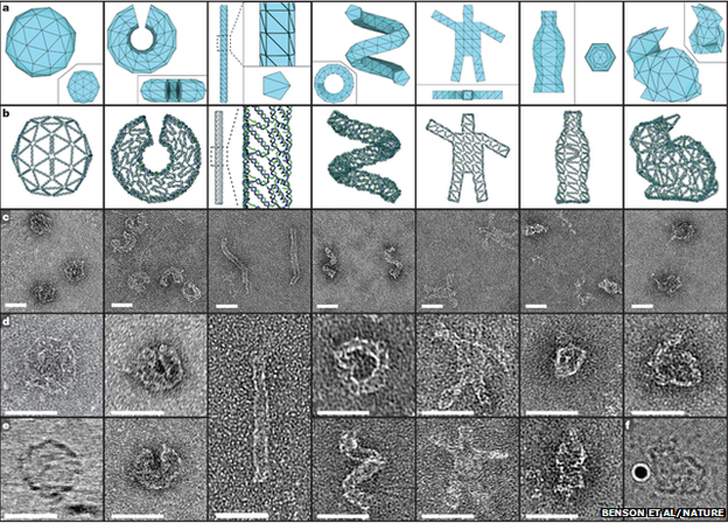If physics is a printer management software and the Universe is the printer, you might say that creation itself is the act of 3D printing. Would that make DNA the gCode with which organisms are created? Perhaps the analogy is a messy one, but the ability to configure DNA into 3D structures could yield fantastic results in the fields of medicine, bioengineering, electronics and more. In a study published in Nature, Björn Högberg and his team outline significant progress in the technique of DNA origami that has sees them able to automatically create 3D structures from DNA.
In the past, it’s been possible to fold DNA into specific structures, but the process is an arduous, manual one. On top of that, most of these structures are rigid and brick-like in nature. To fold it into more dynamic shapes and to do so automatically is the next step. Because the pairing of DNA base pairs (A and T, C and G) can be matched in such a way as to result in specific shapes, the team was able to write a computer program that would translate 3D shapes into the appropriate DNA sequence. Högberg, of the Swedish Karolinska Institute, tells BBC News, “With a few clicks of your mouse, you get a complete list of the DNA strands that you need to mix in a test tube. Then you send that to a DNA synthesising company, you receive the DNA, you mix it up in a test tube, and these structures self-assemble.”
The results are pretty mind blowing. With a batch of 200 test tubes filled with self-assembling DNA, the team was able to fabricate tiny rods, bunnies, and figures that resemble the human form all at a 100nm (0.0001mm) in size. Let’s see your extruder do that! “The learning curve is really improved here, it’s really easy to design them now,” Dr. Högberg tells the Washington Post, “But creating them hasn’t really changed. To actually get them printed out, you have to order the DNA and pipette it together, and that’s of course the barrier to entry for most people.” Once the process of manufacturing DNA itself is made more accessible, the whole process of custom, 3D printed DNA will become a whole lot easier, Högberg says, “It’s almost a one-click procedure.”
DNA, then, isn’t even the purpose of this research. It’s just a tiny, programmable way to build 3D objects, according to Högberg, “We’re not really concerned with the genetic information. We’re using DNA purely as a construction material.” With this building material, the researchers hope to construct tiny objects, such as unique drug deliver mechanisms or DNA structures coated with gold and react to light. Magic Schoolbus, here we come!





